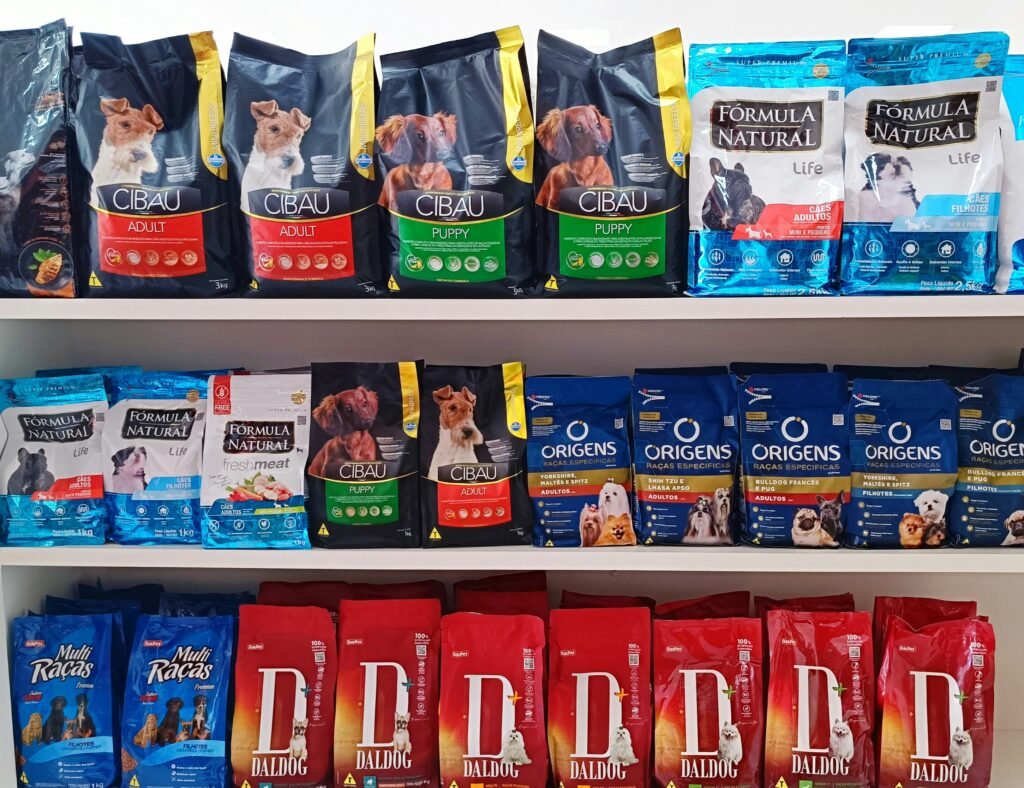
Nutritional Value: Dry vs. Wet Dog Food
The nutritional content of dog food plays a crucial role in the health and well-being of pets. Both dry and wet dog food formulations aim to meet the dietary requirements of dogs, but they differ in their ingredients and nutritional profiles. Dry dog food, often referred to as kibble, typically contains a balanced mix of proteins, fats, and carbohydrates. Its primary constituents usually include meat, grains, and various vegetables, which provide essential nutrients. On the other hand, wet dog food generally contains a higher moisture content and often features meat as the primary ingredient, along with added vitamins and minerals.
When evaluating dry dog food, one key aspect is its protein content, which is vital for muscle development and overall health. High-quality dry foods often incorporate meat meal or whole meat, ensuring the protein is easily digestible. Additionally, fats, usually sourced from animal fats or oils, contribute to energy levels and support skin and coat health. Carbohydrates, which can be derived from grains or vegetables, provide a source of energy and aid in digestion.
Wet dog food, conversely, has some distinct advantages, particularly in hydration. The increased moisture content can help keep dogs hydrated, especially those that do not drink enough water. This type of food is beneficial for older dogs or those with specific health conditions that may require a higher moisture intake. Similarly, the rich flavor and aroma of wet food often make it more appealing, encouraging reluctant eaters to consume adequate nutrients.
Essential vitamins and minerals are prevalent in both types of dog food and are vital for immune support, bone health, and various bodily functions. Regardless of whether one chooses dry or wet dog food, it is essential to consider factors like the dog’s age, breed, and any existing health concerns to select a diet that best caters to their individual nutritional needs.
Convenience and Storage: Which is Easier?
When deciding between dry dog food and wet dog food, convenience and storage are crucial factors for pet owners. Each type of food presents unique advantages and disadvantages, which can influence the overall feeding experience. Dry dog food, often lauded for its longer shelf life, can remain stable for several months to years when stored properly in a cool, dry place. This characteristic makes it particularly appealing for busy pet owners who may not want to make frequent trips to the store. Furthermore, dry kibble can be easily portioned, allowing for effortless daily servings without any need for additional preparation.
On the other hand, wet dog food typically has a shorter shelf life, generally requiring refrigeration after opening. Most canned or pouch varieties can last for about 3 to 5 days in the refrigerator after being opened. While some owners might find this trade-off inconvenient, there are benefits associated with wet food as well. The ease of serving wet food makes it a quick option that requires minimal effort to prepare, as it can often be simply scooped out and served directly, eliminating the need for measuring or weighing. This could be invaluable for those with busy schedules or when traveling with pets.
Additionally, the storage requirements differ significantly between the two types of food. Dry food can be stored in its original packaging or a designated container, minimizing issues related to spoilage or moisture absorption. In contrast, wet food necessitates more careful handling, particularly after being opened. This additional storage requirement may pose a challenge for some pet owners, but others appreciate the benefits of the moisture content and palatable taste that wet food provides. Ultimately, the choice between dry and wet dog food will heavily depend on individual circumstances, preferences, and lifestyle considerations.
Dental Health Impact: Dry vs. Wet Food
When considering the influence of diet on dental health, it is essential to evaluate the characteristics of dry dog food versus wet dog food. Dry dog food, often referred to as kibble, is formulated in a manner that promotes dental hygiene through its crunchy texture. As dogs chew on kibble, the abrasive action can help reduce plaque and tartar buildup, contributing to fresher breath and healthier gums. This mechanical cleaning effect is a significant advantage of dry food, especially for breeds that are prone to dental issues, such as Dachshunds and Chihuahuas.
In contrast, wet dog food typically consists of canned meals rich in moisture, which can offer hydration benefits that are beneficial for dogs with urinary tract issues or those prone to dehydration. However, the soft consistency of wet food does not provide the same dental cleansing effect as dry kibble. Relying solely on wet food may lead to potential dental problems over time, as it does not stimulate the same chewing action that can keep teeth cleaner. Dogs consuming a diet primarily composed of wet food might be at an increased risk for periodontal disease, which is characterized by inflammation and infection of the structures surrounding the teeth.
For pet owners concerned about their dog’s dental health, it may be beneficial to incorporate a mixed feeding regimen that combines both dry and wet food. This approach not only supports overall nutrition but also takes advantage of the dental and hydration benefits that each food type has to offer. Additionally, routine dental check-ups and at-home dental care practices, such as brushing or using dental chews, can further enhance dental health, regardless of whether a dog is fed dry or wet food. Addressing specific dental conditions tailored to the dog’s breed and individual health status remains essential in choosing the right dietary approach.
Cost Analysis and Breed-Specific Recommendations
When selecting the right food for dogs, cost often plays a significant role in the decision-making process. The price point for dry dog food typically ranges from $1 to $4 per pound, while wet dog food generally costs between $2 and $5 per can or $3 to $6 per pound. Over time, dry dog food can provide a cost-effective solution due to its longer shelf life and feeding convenience. It is common for a bag of dry food to last longer than the equivalent amount of wet food, benefiting pet owners economically in the long term.
An essential factor to consider is the value provided by each type of food. Dry dog food, often more calorie-dense, allows pet owners to feed their dogs smaller portions, yielding a potential reduction in overall food expenses. In contrast, wet dog food may contain higher moisture content, which can be beneficial for certain dogs, particularly those prone to urinary issues or dehydration. However, this advantage comes at a higher expense, necessitating a careful evaluation of a pet owner’s budget and dog’s dietary needs.
Breed-specific recommendations further shape the discussion on food types. For smaller breeds or those with dental issues, dry dog food may assist with oral health due to its texture aiding in plaque control. Conversely, larger breeds and senior dogs may benefit from wet dog food, which is easier to chew and digest, promoting better hydration. Furthermore, certain health conditions such as obesity or kidney disease necessitate customized dietary considerations—dry food could be more appropriate for weight management, while wet food may aid hydration in dogs with kidney concerns.
Ultimately, consulting with a veterinarian is advisable when considering the ideal food type based on specific breeds and health requirements. This expert guidance can help pet owners make informed choices that align with their pets’ nutritional needs and their financial capabilities.
 petszillaclub.xyz
petszillaclub.xyz

